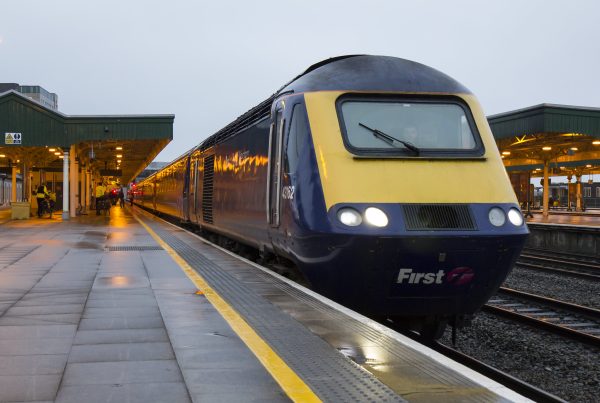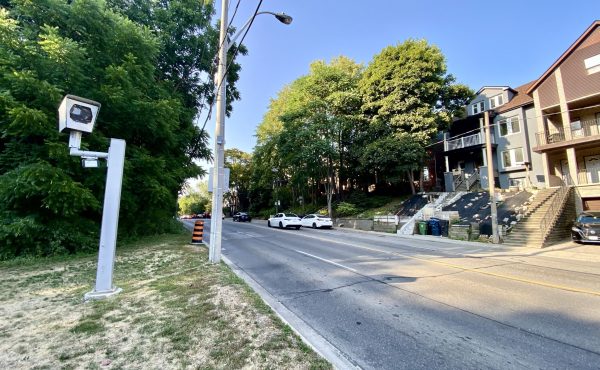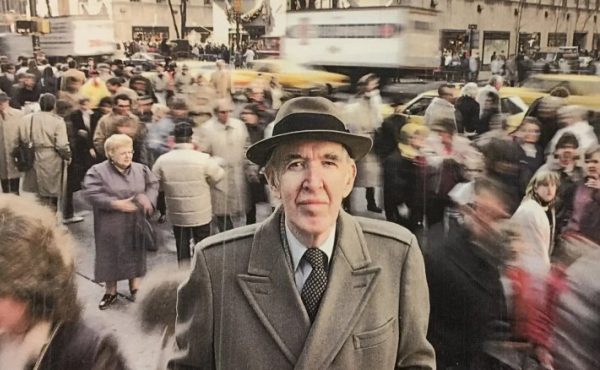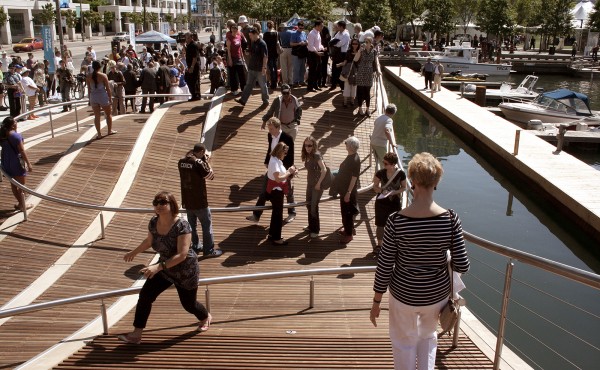It’s curious and quaint how successive generations of federal Liberals rekindle their (rhetorical) affection for high-speed rail (HSR) at almost exactly the same moment in their respective tenures, i.e., with 20 minutes left to govern.
We seem to be pulling into that station again, with this week’s splashy announcement that a multi-partner consortium has been selected to build “Alto,” which will become — if it actually becomes more than a press conference — one of the most ambitious infrastructure projects in Canadian history, rivalling the construction of the St. Lawrence Seaway in the 1950s.
The fact that Ottawa has, in fact, picked a dance partner — the consortium’s maximally branded moniker is “Cadence” — sends a signal that the idea has surmounted the dreaded feasibility study phase. The consortium members, what’s more, are truly heavy hitters: CDPQ Infra, AtkinsRéalis, Keolis, SYSTRA, SNCF Voyageurs, and Air Canada.
There’s a lot here to make Quebeckers happy: CDPQ is Quebec’s 60-year-old pension plan investment arm and a long-time player in provincial infrastructure; Atkins is the tactically renamed/reborn engineering giant SNC Lavalin; Keolis is a French transportation firm that worked on the Waterloo LRT; SYSTRA, also French, is a €1.1 billion global rail operator, including high-speed in Korea; and SNCF is France’s state-owned inter-city rail giant, with operations across Europe.
Air Canada needs no further introduction, of course. The carrier’s presence suggests that some of the planned HSR stations may be at or near airports (which does make sense), but it also hints at the reality that other transportation companies see this thing as a threat.
The bedrock question about a long-mooted HSR service is this: everyone loves the idea, in theory, but will people actually choose to travel by train, and do so in numbers that (i) justify the cost; and (ii) produce a net reduction in carbon?
The follow-up riddle involves the particulars: the route, the frequency, train capacity and, perhaps most importantly, the cost of a ticket relative to other travel options.
First, the route. We don’t know what it is yet, except that the western terminus is no longer Windsor, as was long bruited, but Toronto (the other nodes include Peterborough, Ottawa, Montréal, Laval, Trois-Rivières, and Quebec City). London immediately piped up to complain about being left off the route list, and one could easily make an argument for Waterloo, as well as potential inter-connects with U.S. rail networks.
If the $3.9 billion scheme (a truly low-ball figure) survives the next election, there will be more of this kind of discourse, and many earnest debates about how and where to build a high-speed corridor, which requires its own right-of-way and bridges instead of level crossings.
The cautionary tale here is California, where the state embarked on an L.A.-to-San Francisco HSR project in 2008, with a projected cost of USD$33 billion, to open in 2020.
It hasn’t. According to a report from Bloomberg this week, California’s HSR scheme now weighs in at a bracing USD$89-128 billion, with only 15% of the 776-mile route even under construction as of 2025. This mega-project is also, unsurprisingly, drawing the murderous scorn of President Donald Trump.
Infrastructure mega-projects are always late and always over-budget. In the case of California, years of political, regulatory and legal wrangling over the route map produced a sub-optimal compromise, with portions relegated to existing rail corridors that can’t actually handle high-speed rail. The earliest leg of the line — it’s being built in phases — won’t be up and running until the end of the decade, a time-scale that rivals Boston’s Big Dig.
The state outsourced the whole undertaking to an arm’s length authority, presumably to insulate it from political interference while expediting planning and development. None of these goals have been achieved. As we know from local experience, it’s impossible to erect a force field around huge transit projects to insulate them against meddling. They exert a powerful gravitational force, and there’s no reason to believe Canada’s HSR scheme will be any different.
In the same way, the Toronto-Quebec route/station planning process will become a massive and prolonged mud-wrestling fight between Ottawa, local governments, NIMBYs, the consortia and all manner of rail experts. I’m hoping Quebec finds a way to insinuate its relatively more expansive transportation planning culture into the decision-making process, as opposed to the English-Canadian approach, which invariably leads to cost-driven concessions that produce self-defeating decisions, like the parsimonious spacing of stations on LRT or subway lines.
Ultimately, I want the engineers and officials who are planning and building this thing to think deep thoughts about the lessons of the UP Express service between Union and Pearson.
What the feds originally conceived was a premium service geared at, and priced for, business travellers. What UP Express became — once the powers that be at Metrolinx realized the initial ticket prices were suicidal — is the western leg of the downtown relief line, used regularly by commuters transferring on and off the TTC, and not just as a shuttle to the airport.
Londoners have a similar relationship with the British Rail trains that crisscross the U.K. capital, thanks in part to smart network design and the interoperable smart cards pioneered there by Oyster 20 years ago.
The moral of these story is that while rail lines are quintessentially inflexible, the services they provide should be created in anticipation of the need to adapt them as traveller behaviour shifts. The tough question hanging over HSR in the Toronto-Quebec corridor is whether there are enough inter-city travellers to justify the expense, and, relatedly, whether such a service will create the desired mode shift in a country where there’s no habit of routine inter-city rail travel.
We don’t know, going in, whether there are latent and unanticipated uses that might be unlocked, for example, with changes in pricing or scheduling. These decisions, of course, will come much later, but they are directly connected to the choices that will be made, by the various stakeholders, at the front end.
HSR between Ontario and Quebec should become Canada’s next nation-building project, especially at a time when we need to think more about east and west than north and south. My hope, at the beginning of what could well be a long and winding road, is that the folks planning this complicated piece of infrastructure won’t be afflicted by tunnel vision.






One comment
John has expressed my obvious concerns. Can North America feasibly afford and implement HSR in low density geographic areas, or one with a few large population centers per size. It’s not Europe, Japan or South Korea. When I first heard about this 35 years ago proponents talked of “SkyDome” effect. Does not last forever